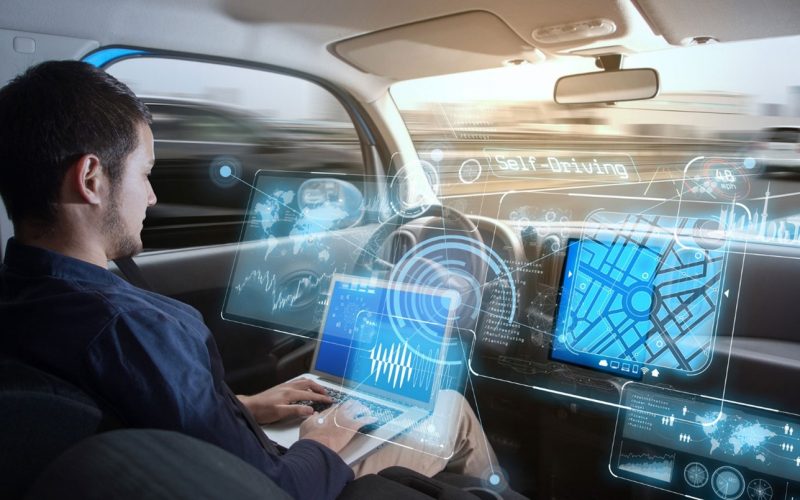The Future of Autonomous Vehicles: Trends and Challenges
The automotive industry is undergoing a seismic shift with the advent of autonomous vehicles (AVs). These self-driving cars promise to revolutionize transportation, offering a future where human drivers are no longer necessary. However, the journey towards fully autonomous vehicles is fraught with both exciting trends and formidable challenges. This article delves into the current landscape of autonomous vehicles, highlighting the key trends shaping their future and the significant challenges that must be overcome.
Key Trends Shaping the Future of Autonomous Vehicles
1. Advancements in Artificial Intelligence and Machine Learning
Artificial Intelligence (AI) and Machine Learning (ML) are at the core of autonomous vehicle technology. These systems enable AVs to interpret vast amounts of data from sensors, cameras, and radar to make real-time driving decisions. Recent advancements in AI and ML have significantly improved the accuracy and reliability of these systems. For instance, deep learning algorithms now allow AVs to better recognize and predict the behavior of pedestrians, cyclists, and other vehicles, enhancing safety and efficiency.
2. Integration of 5G Technology
The integration of 5G technology is another crucial trend propelling the autonomous vehicle industry forward. 5G offers ultra-low latency and high-speed data transmission, which are essential for real-time communication between AVs and their surroundings. This connectivity enables vehicles to share information about traffic conditions, road hazards, and other critical data, thereby improving overall traffic management and safety.
3. Development of High-Definition Maps
High-definition (HD) maps are indispensable for the navigation of autonomous vehicles. These maps provide detailed information about road layouts, traffic signals, and other environmental features. Companies like Google, HERE, and TomTom are investing heavily in the development of HD maps, which are continuously updated to reflect changes in the road environment. This ensures that AVs have the most accurate and up-to-date information for safe navigation.
Picture by: Yandex.com
4. Collaborations and Partnerships
The complexity of autonomous vehicle technology has led to numerous collaborations and partnerships across the automotive and tech industries. Automakers are teaming up with technology companies, startups, and academic institutions to pool resources and expertise. For example, Waymo, a subsidiary of Alphabet Inc., has partnered with Fiat Chrysler and Jaguar Land Rover to integrate its self-driving technology into their vehicles. Such collaborations are accelerating the development and deployment of AVs.
5. Regulatory Support and Policy Frameworks
Governments around the world are recognizing the potential benefits of autonomous vehicles and are working to create supportive regulatory frameworks. In the United States, the National Highway Traffic Safety Administration (NHTSA) has issued guidelines for the testing and deployment of AVs. Similarly, the European Union is developing regulations to ensure the safe integration of AVs into public roads. These regulatory efforts are crucial for the widespread adoption of autonomous vehicles.

Challenges in the Path to Autonomous Vehicles
1. Safety and Reliability
Safety remains the paramount challenge for autonomous vehicles. Despite significant advancements, AVs are still not infallible. High-profile accidents involving self-driving cars have raised concerns about their reliability. Ensuring the safety of AVs requires rigorous testing under diverse and unpredictable real-world conditions. Moreover, the development of fail-safe mechanisms to handle system malfunctions is essential to prevent accidents.
2. Ethical and Legal Issues
The deployment of autonomous vehicles raises several ethical and legal questions. For instance, in the event of an unavoidable accident, how should an AV decide between two harmful outcomes? Such ethical dilemmas require careful consideration and the development of ethical frameworks. Legally, determining liability in accidents involving AVs is complex. Policymakers and legal experts must work together to address these issues and establish clear guidelines.
3. Cybersecurity Threats
As autonomous vehicles become more connected, they are increasingly vulnerable to cybersecurity threats. Hackers could potentially gain control of AV systems, leading to catastrophic consequences. Ensuring the cybersecurity of AVs involves protecting the vehicle’s software, communication networks, and data from cyber-attacks. This requires robust encryption, continuous monitoring, and regular updates to security protocols.
4. Infrastructure Development
The successful deployment of autonomous vehicles depends on the development of supportive infrastructure. This includes the installation of smart traffic signals, dedicated AV lanes, and charging stations for electric AVs. Additionally, urban planning must consider the integration of AVs into public transportation systems. Significant investments are required to build and maintain this infrastructure, which poses a challenge for governments and private entities.
5. Public Acceptance and Trust
Gaining public acceptance and trust is crucial for the widespread adoption of autonomous vehicles. Many people are still skeptical about the safety and reliability of self-driving cars. Building public trust requires transparent communication about the benefits and limitations of AVs, as well as demonstrating their safety through extensive testing and real-world deployments. Public education campaigns and pilot programs can help familiarize people with AV technology and alleviate their concerns.
Conclusion
The future of autonomous vehicles is both promising and challenging. Trends such as advancements in AI and ML, the integration of 5G technology, the development of HD maps, collaborations, and regulatory support are driving the industry forward. However, significant challenges related to safety, ethical and legal issues, cybersecurity, infrastructure development, and public acceptance must be addressed.
As the technology continues to evolve, it is essential for stakeholders across the automotive, technology, and regulatory sectors to work together to overcome these challenges. By doing so, we can unlock the full potential of autonomous vehicles, leading to safer, more efficient, and more sustainable transportation systems.










